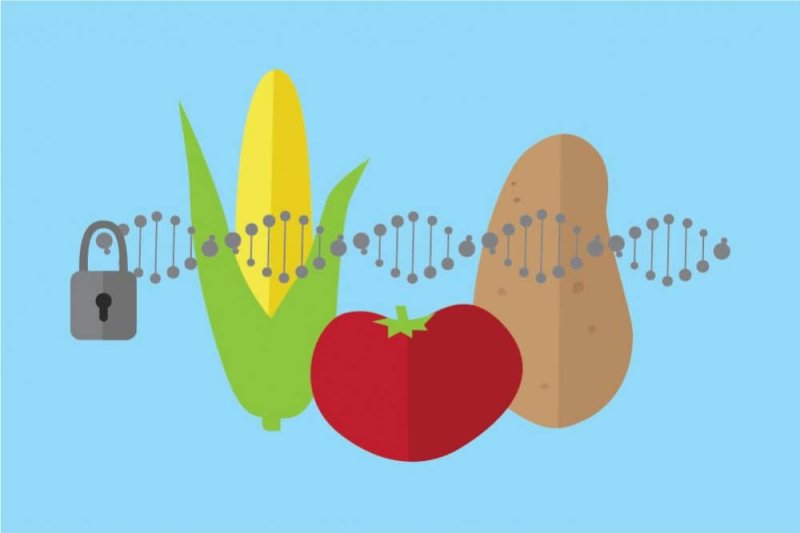In his speech at the recent American Farm Bureau convention, President Trump said his administration was “streamlining regulations that have blocked cutting-edge biotechnology.”
Why is this necessary? Paraphrasing New York Times columnist Paul Krugman’s words on economic policy, it’s because we’re still living with “zombie” biotech regulatory policies that “should have been killed by the evidence … but keep shambling along nonetheless.” The time to end this “reign of error” is now.
Why now? Because the evidence is in: Biotechnology methods are safe. And because new, precise gene-editing approaches are poised to revolutionize agriculture. But for that to happen, we have to start regulating from common sense instead of fear.
For the past 30 years, every organism improved using modern biotechnology methods, no matter how innocuous, has been regulated as if it were potentially hazardous. The price of compliance with such fear-based regulation has been huge – more than $100 million for a single biotech crop. And it can take years to obtain regulatory approval.

The result? We have no agricultural animals improved using biotechnology on the market and we have just a handful of commercial biotech crops. Most are commodity crops with big enough markets to allow recovery of hundred million dollar expenditures on development and deregulation. Is it any surprise that they were developed by big companies with deep pockets? Few small companies or academic scientists have been able to get into the game.
American farmers were quick to adopt biotech crops. They’ve been growing biotech corn, soybeans and cotton for more than 20 years. Trillions of meals with biotech ingredients have been consumed with no ill effects. Biotech crops have added billions to our national wealth and made farming kinder to the environment.
And yet we’re still regulating as if biotech methods were dangerous. Today, scientists around the world are overwhelmingly convinced by the evidence that biotech methods are safe. Biotech approaches are much less disruptive to the genetic machinery than the chemical and radiation mutagenesis used for crop improvement – with no regulation at all – for most of the last century. And they’re much more exact than cross-breeding.
New gene-editing tools are even more precise than the older methods. They can be used to make predictable changes in a selected gene and leave behind no extraneous genetic material. Such changes are just like the natural variants that underlie the domestication of agricultural plants and animals. And they’re the same as genetic changes introduced by the mutagenic methods used to produce most of today’s high-yielding grain varieties and such favorites as Rio Red grapefruit.
This means that many of the organisms produced using today’s high-precision gene editing will be indistinguishable at the molecular level from those produced by nature and by previous generations of breeders. This presents a conundrum for our current regulatory approach.

Fortunately, the solution is in plain sight: Confine regulatory scrutiny to the novel properties of improved organisms. That is, regulate the product, not the process, as the U.S. National Academies of Science and Engineering have long recommended.
Regulators must identify the (handful of) novel properties of improved organisms that present unreasonable risks to people, animals, agriculture or the environment and they must restrict regulatory scrutiny to such organisms.
The rest present hazards no different from those posed by plants and animals improved by long familiar plant breeding techniques and require no regulation. To move quickly in a highly competitive international environment, developers need the certainty that they will not face burdensome bureaucratic barriers if they use gene editing to develop products whose properties are no different from those that can be derived by conventional breeding methods. Australia has already begun to move in this direction.
Dispelling the suffocating cloud of fear-based biotechnology regulation is a must if the U.S. is to maintain global leadership in biotechnology. Bringing common sense to regulation by recognizing that modern biotech methods are just the next step in our 10,000-year history of agricultural innovation will unleash investment in small biotech start-ups, a heavy lift today because of the regulatory costs. And perhaps most important, it will free agricultural scientists to use the very best biological methods to do their critical work of helping farmers and ranchers provide us with healthful, sustainably grown food.
Nina Fedoroff is a molecular biologist and professor emeritus at Penn State University. She was awarded the National Medal of Science in 2007 and served as president of the American Association for the Advancement of Science (AAAS) from 2011 to 2012. She also served as a science adviser to the Secretary of State and to the administrator of USAID.
Alison Van Eenennaam, Ph.D. is an animal geneticist and Cooperative Extension specialist in the Department of Animal Science at the University of California, Davis. Follow her on Twitter @BioBeef































